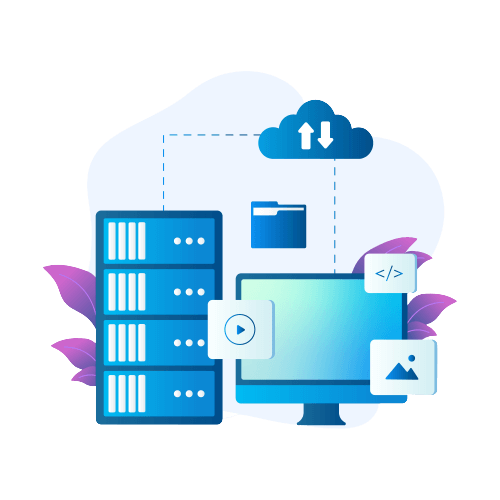
Microservices &
Containerization

Microservices
We split the functionalities into microservices while making decentralised cloudnative applications. This way, immediate updates can be rendered in the microservices and the application doesn’t have to be disrupted entirely. But your question can be: Why should I use microservices? It helps to design, deploy and support the cloud applications quickly and efficiently, with reduced costs.

Containers
We, at iTechOps, use containerization method to bring multiple apps together into a single virtual space. We can access them with a shared operating system. So, we can run an application in different environments, without creating a separate version for each use case. This way, containerization greatly reduces the time, effort and cost required during the development process. Moreover, you can release the application in the market quickly.
Do You Need MicroService Expert?
At iTechOps,We split the functionalities into microservices while making decentralised cloudnative applications.
Talk to a MicroService ExpertFAQ
How do microservices differ from Monolithic architecture?
In microlithic architecture, your application works on a single, interconnected unit. Thus, you must change the whole system when you want to change one domain. As a result, monolithic architecture is a little complex to deal with. These are also less scalable. Whereas in microservices, the applications are independent. Thus, they are easier to update and more scalable. It improves fault split, resulting in more agile development and deployment.
What factors make microservices and containers relatable?
The factors that make microservices and containers relatable are:
Containers enable microservices.
The lightweight and consistent environment of containers helps in the development, deployment, and scalability of microservices.
Each microservices run the best in its container. ensuring isolation from other services and efficient use of resources.
What are the Benefits of Microservices and Containerization?
The benefits of using microservices and containerization in an organization are:
Help easy scaling.
Promotes adaptability and agility.
Provides resilience and fault isolation.
Makes efficient use of resources.
Microservices and containers align best with DevOps practices. Thus, enables integration, deployment, and delivery pipelines.
How does microservices architecture impact development and team structures?
Microservices Accessibility a decentralized approach to development. It makes teams work on isolated services and allows quick iteration and deployment. Yet, you must ensure clear communication among your team members for a better outcome. Coordinated work brings seamless integration and interoperability between services.
What challenges come along with microservices and containerization?
The challenges associated with microservices and containerization include:
The complexity of managing multiple services
Potential communication gapssss
Ineffective monitoring and debugging tools
Security concerns
The need for extra care in managing container sprawl
What tools are, in general, used for container orchestration?
Kubernetes is one of the most renowned tools for container orchestration. It automates tasks such as deployment, scaling, and management of containerized applications. However, there are several other tools available in the market, including Docker Swarm, Apache Mesos, and Amazon ECS, which serve the same purpose.